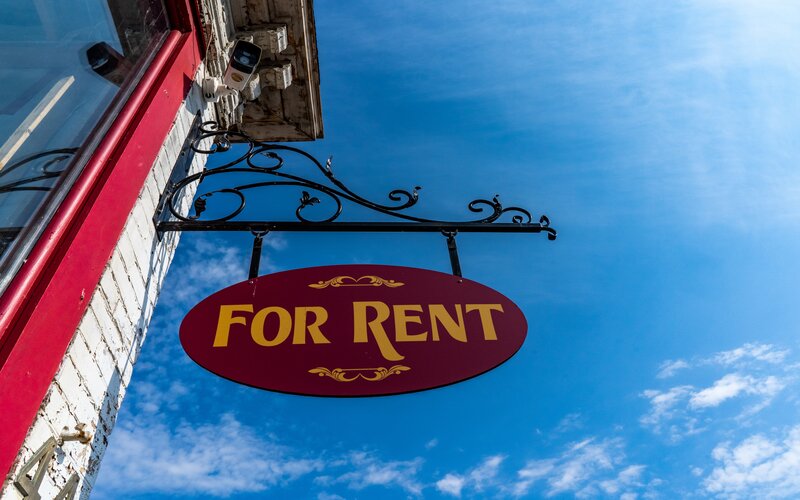
Tenants across Australia are struggling after record rental growth in recent times, but there are early signs these pressures might ease.
Rent in Australia has risen for 35 consecutive months, but the curve is beginning to flatten.
CoreLogic's rental report for the June '23 quarter showed quarterly rent growth of 2.5%, compared to 2.8% over the three months to May, the first quarterly deceleration since November '22.
Annual growth was 9.7% over the 12 months to June, down from a 10.2% annual lift over the 2022 calendar year
This is still well above the average growth for the previous decade, but CoreLogic head of research Eliza Owen says there are several reasons this could be the beginning of a sustained period of rental growth.
If interest rates go down, rent normally follows
Rental growth and the cash rate target tend to be positively correlated.
When the interest rates they are paying on their investment loan go up, landlords will often pass on the extra cost to their tenants.
It's probably one of the biggest reasons rent has gone up as much as it has, but by the same reasoning, if rates go down, as economists from all of the big four banks expect they will at some point in 2024, upward pressures are likely to ease.
As Ms Owen points out, lower rates are also likely to mean more investors buy property to rent, boosting the rental supply and potentially lowering rent growth.
"Expectations that the RBA will be done with rate hikes in 2023 may even be contributing to an early recovery in investment activity," Ms Owen said.
According to the ABS, after peaking at 21,663 in March 2022, the number of new home loans for investment purposes (excluding refinancing), has been declining, dropping to 11,485 in January '23, but has rebounded somewhat since, reaching 17,497 by June.
Slowing income growth to change housing preferences?
Stimulus packages combined with low unemployment saw household wealth swell in the aftermath of the pandemic.
It's one of the reasons high inflation has been so difficult to stop, and it also led to a shift in housing preferences which affected the rental supply.
Ms Owen told the Savings Tip Jar podcast earlier in the year that people could increasingly afford to live with fewer other people, fewer people in share houses or more children moving out of the family home, which contributed to lower stock levels with Aussies spread out across more properties.
"The number of people per household fell from 2.6 to 2.5, which doesn't sound like that much of a difference, but the RBA estimates that it added to housing demand by about 120,000 dwellings," Ms Owen said.
However, high rates are slowing growth and increasing unemployment, which could see this trend reverse.
"In regional Australia, the average household size has returned to pre pandemic levels, and is starting to rise across the combined capital cities," Ms Owen said.
Tenants to start avoiding expensive areas
Ms Owen also highlighted internal migration patterns that suggest demand is increasing in areas where rent is more affordable.
"In the 12 months to June last year, ABS data showed more affordable rental markets like Logan/Beaudesert and Ipswich [Queensland] with the first and third highest volume of net internal migration across the country," she said.
Much of the huge rent growth has been driven by Australia's most in-demand suburbs in expensive cities.
Across the eight capitals, rental growth rose 11.5% in the 12 months to June '23, compared to 4.9% for regional areas.
Australia's largest capitals, Sydney (up 12.9%), Melbourne (12.6%), Brisbane (up 10.3%) and Perth (up 13.4%) are becoming prohibitively expensive for a lot of people, who are increasingly moving to more affordable regional areas.
This in turn is likely to lower the upward pressure in these markets, slowing growth and lowering the average rate across Australia.
